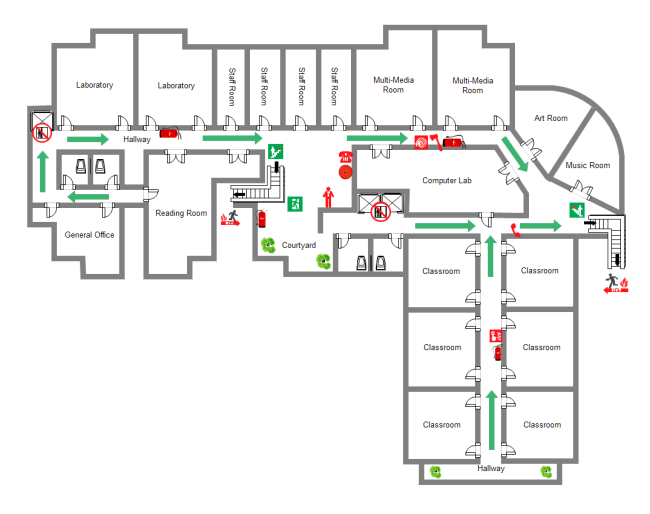You may have been wondering about the lack of posts over the past year and a half. Teaching another subject (I can add Python to my Spanish, German and KS3 French), some health issues and raising a toddler (who is awesome) has meant that the blog has had to take a backseat. Fortunately, there are plenty of good blogs out there. If you haven’t come across MFL Craft, Frenchteacher, the nice man who teaches languages or many of the MFL Facebook groups, Threads communities etc then definitely open up some of those in a new tab.
5 things to try tomorrow.
In the early days of my MFL there were forums on the TES website (anyone remember those??). One contained “minimal preparation, highly effective” activities. It probably had a role in inspiring some of this blog and the number of posts titled “5 things to do tomorrow.” I think edu-language over time has changed a bit so I will characterise these five as “low effort, high impact” and the first one counts as two 😉
Clipboard / mini-whiteboard
Recently on Twitter/X, a simple clipboard shook the education world (or the small subset thereof that exists on Twitter/X). The writer of the post suggested walking around with a clipboard and making notes during class. This ground-breaking practice is something I had been doing for the past 2-3 years and maybe longer; I can’t quite remember when it started. I humbly suggest you do it with a mini-whiteboard/mini-board (the chipboard type as they are easier to write on). By doing so you have just probably saved a tree and also you nearly always have a whiteboard pen on you. So what could you possibly be noting down?
1) Mispronunciations
2) Misconceptions
3) Random name generation
4) Rewards
5) Sanctions
Ultimately, it is up to you. If you don’t currently do it then give it a go. Today, walking around I picked up that my year 7s couldn’t manage “hermoso” (they all pronounced the “h”) or “increíble” (they almost all added a non-existent “d”). Was my modelling poor? I don’t think so but it gave me useful intel to correct them. In addition to picking up things like this, I can note pupils to reward and/or sanction. To save time I sometimes use little codes; you will develop your own. What it might look like is crudely drawn below:
=====================
| + Jack Kate James John Charlie |
|+ Desmond Michael Walt |
| hermoso incredible |
| |
| W JulietteT, Bernard DF |
=====================
===========
| 1 4 6 7 2 3 8 5 |
| 2 4 6 8 1 3 5 7 |
| 8 7 6 5 4 3 2 1 |
===========
I occasionally use something like the above for random name generation. I teach 6-7 different rooms so it doesn’t take much to adapt the layout. On the board at the front of the room, I will write “front, middle 1, middle 2 , back” (in target language). I will then quickly write out the numbers 1-6 or 1-8 depending on how many students there are in a row on my board in a random order. After cold-calling one student, they will then select (in TL) “front number 3” or “back number 2” to pick the next person. As much as I love a wheel of names (Vincent Everett has a completely different use of wheel of names which is well worth a look – not sure if it is him doing the voiceover but his idea), it does save some time. Maybe you already do this and I’m aware a good percentage of Twitter keep it in their heads. I prefer to have something to refer to.
Live-marking – underline, question, double tick and bad English.
Live-marking seems to be one of those newer buzzwords. We have finally moved away from triple marking, deep marking etc or hopefully are in the process of moving away from some of the more heavy duty marking practices that have dominated the 2010s. While students are writing answers to questions, I will circulate and do one of the following:
• underline/highlight something that needs sorting that I think they can sort
• circle something and ask the student question out loud that forces them to think
• double tick any particularly nice Spanish that no-one else is using
It isn’t rocket science and you’re probably already doing it. If not, give it a whirl. It is quick, simple, effective feedback.
Live marking however does not just need to be for writing. I will circulate while students are speaking and if needed borrow their exercise book. I will write the word they are struggling to say with a “bad English” version next to it or immediately underneath. For example: “increíble” = “in cray ee blay” or “divertido” =” dee v-air tee doh.” It allows the pupil to be successful and serves as a very simple aide-memoire. I find very few students relapse with pronunciation after this little intervention.
Positive Post-Parents evening email
Occasionally on parents evening you do not see the students you want to see. Often those students are the trickier ones. However, sometimes you do not see a student who is performing well and deserves recognition. It might be that they were involved in something extra-curricular. It does not take long to write a quick email like the one below and from experience the vast majority of parents welcome it. It can be quickly done in a PPA the next day or day after.
Dear Parent
I’m sorry I didn’t get the opportunity to see you at parents evening. I just wanted to drop you a quick email to say how impressed/pleased/encouraged I have been by …’s effort/progress/attainment in Spanish this year. Their participation / effort / speaking / written work is of a really high standard / excellent / showing some promise. Please pass on how pleased I am with them and they are a credit to you.
Kind regards
Teacher
If you’re not a fast typist, then most modern versions of Word have a dictate mode that is decent. Like all dictation software it will inevitably struggle with some pronunciation so do check before sending.
If you’re considering this approach for the trickier students then I would suggest a phone-call is an infinitely better approach. If you’re relatively new in your career and need to do this then seek out a supportive Head of Department or Head of Year for advice on how they might approach this kind of phone-call.
3x TL Phrase to use
We almost all play a game in our language lessons at some point. Whether it is the classic battleships, sentence stealer a la Conti, Steve Smith’s Alibi or some from EverydayMFL.
I propose pre-teaching three target language phrases before the game. These could fall into different categories. The table below gives you a few ideas. You can convert them into TL.
| Game phrases | Horror Phrases | Gloating phrases | Moving along phrases | Delaying |
| Your turn | I can’t believe you just did that | I win | Come on | Wait a sec |
| You first | You’ve got to be kidding me | I win again | Hurry up | Wait a moment |
| My go | What are you doing? | I’m the best/champion | It is my turn yet | So…. Errrm… |
Some games might lend themselves to specific vocabulary. For example, in battleships your three might be “hit”, “miss”, “sunk”.
You might have a hard to motivate set so if you feel your class are less likely to engage with this then get their partner to tick every time they hear one used. If their partner doesn’t hear any of them, then they don’t win.















































.jpg)













 Great way to build vocabulary. If you have access to dictionaries, picture dictionaries or Usborne’s first thousand words. Get students to find 5 of something so they broaden their vocabulary. Try to avoid them getting hung up on finding the duck!
Great way to build vocabulary. If you have access to dictionaries, picture dictionaries or Usborne’s first thousand words. Get students to find 5 of something so they broaden their vocabulary. Try to avoid them getting hung up on finding the duck! Talk or write about a topic without using certain words. In the cases of one or two students, I’m going to declare war on the next individual who uses interesante, aburrido, bueno, malo, emocionante.
Talk or write about a topic without using certain words. In the cases of one or two students, I’m going to declare war on the next individual who uses interesante, aburrido, bueno, malo, emocionante. 

